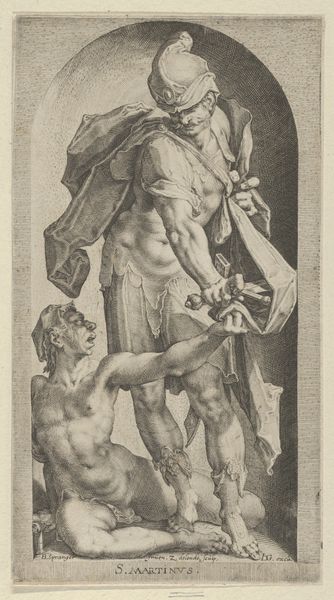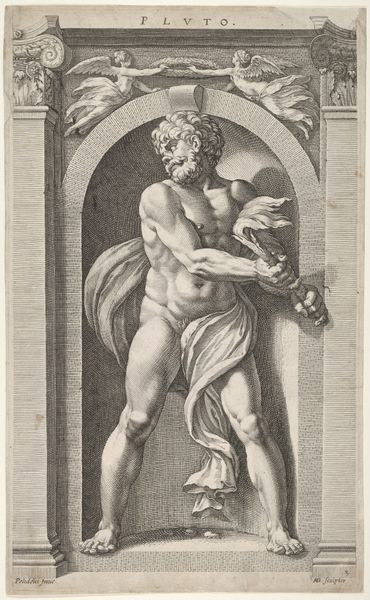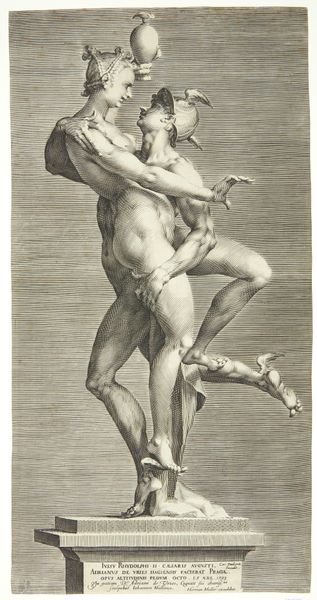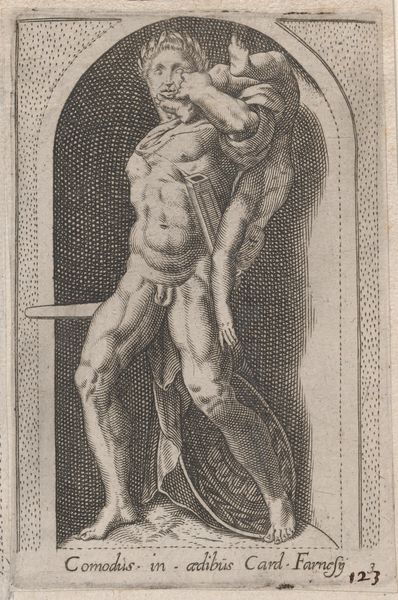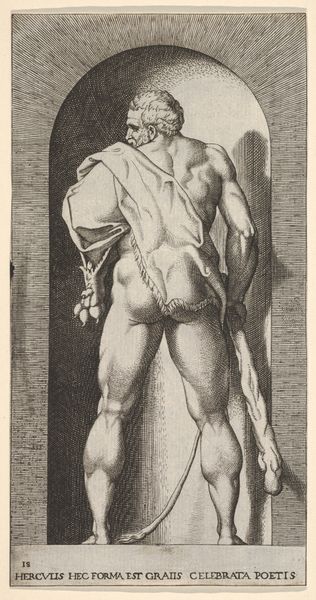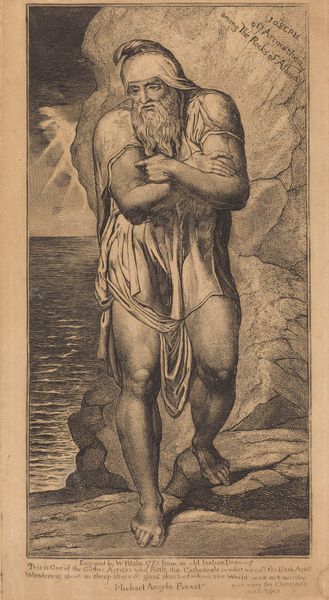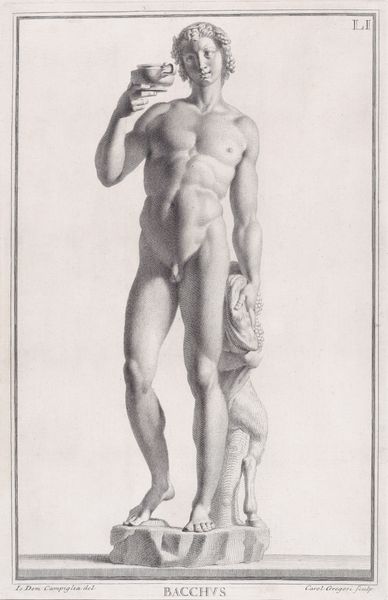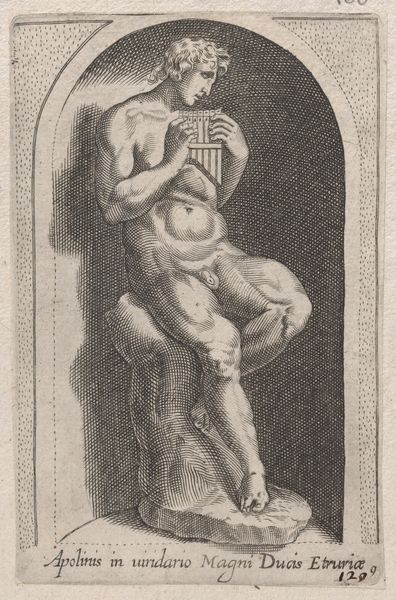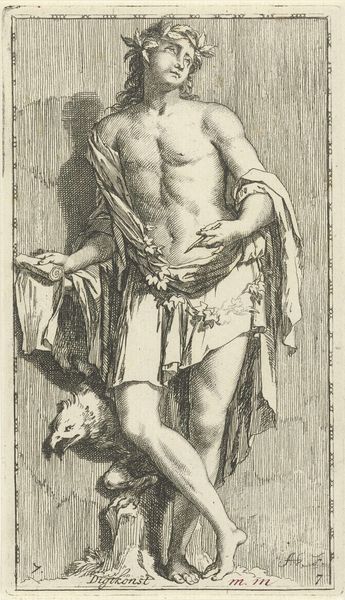
Joseph of Arimathea, after Michelangelo's Crucifixion fresco in the Cappella Paolina, Vatican 1540 - 1566
0:00
0:00
drawing, print, engraving
#
portrait
#
drawing
# print
#
figuration
#
portrait drawing
#
history-painting
#
italian-renaissance
#
engraving
Dimensions: Sheet (trimmed): 13 9/16 × 7 1/16 in. (34.4 × 18 cm)
Copyright: Public Domain
This engraving of Joseph of Arimathea, was created by Nicolas Beatrizet in Italy in the mid-16th century, after Michelangelo's fresco in the Vatican's Cappella Paolina. Beatrizet's print gives us insight into the cultural significance of Michelangelo’s Roman frescoes, which were so admired that printmakers rushed to disseminate them to a wider audience. Joseph, a wealthy disciple of Jesus, is depicted here after the crucifixion of Christ. The figure is a study in grief and mourning, his hunched posture and sorrowful expression conveying a deep sense of loss. The image creates meaning through its historical associations to religious narratives and its representation of human emotion. Beatrizet's print serves as a historical document that allows us to understand how Michelangelo's religious imagery was received and circulated in sixteenth-century Italy. Art historians rely on a variety of resources, including archival documents, contemporary accounts, and comparative analyses, to reconstruct the historical context and interpret the meaning of such artworks.
Comments
No comments
Be the first to comment and join the conversation on the ultimate creative platform.
